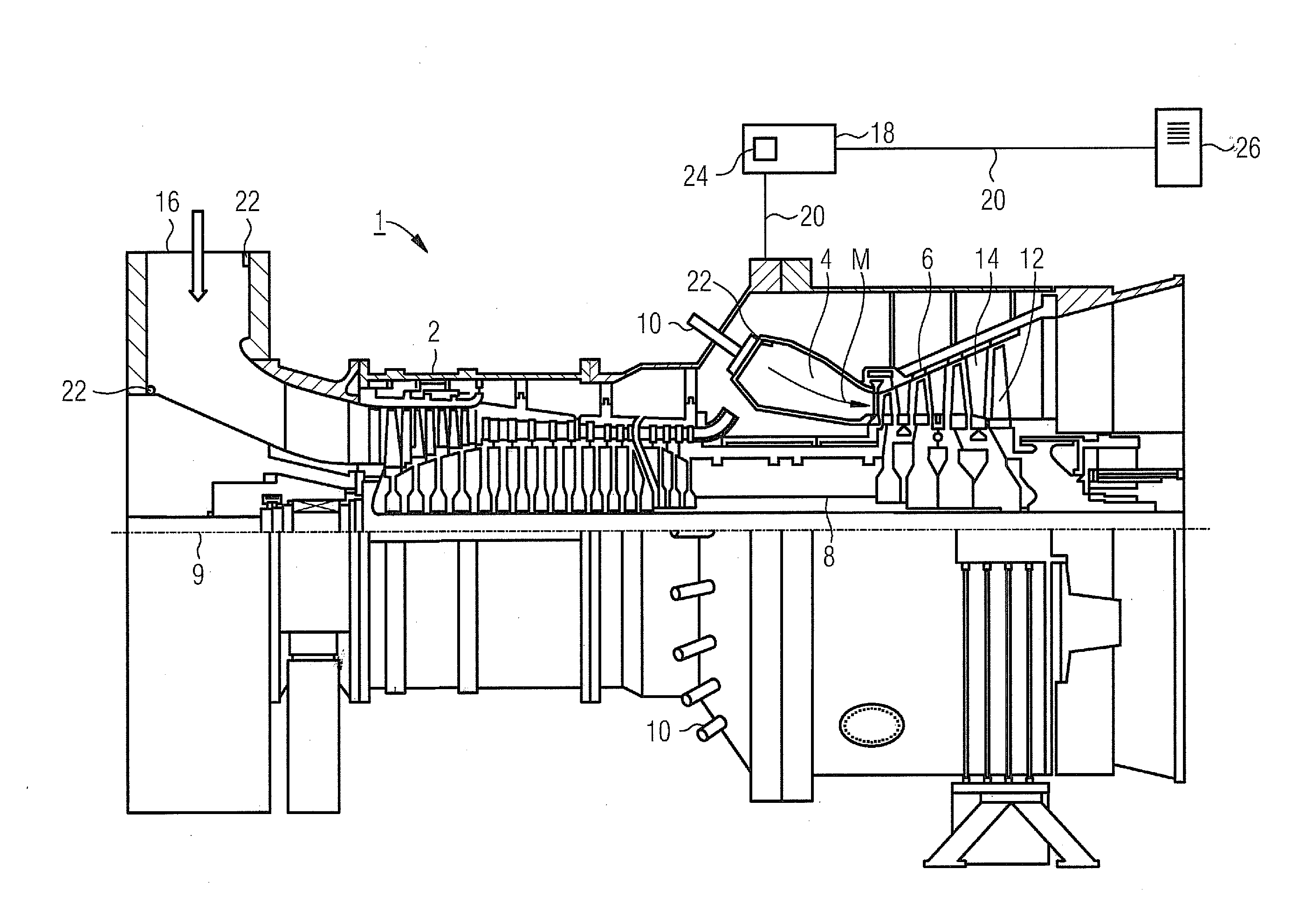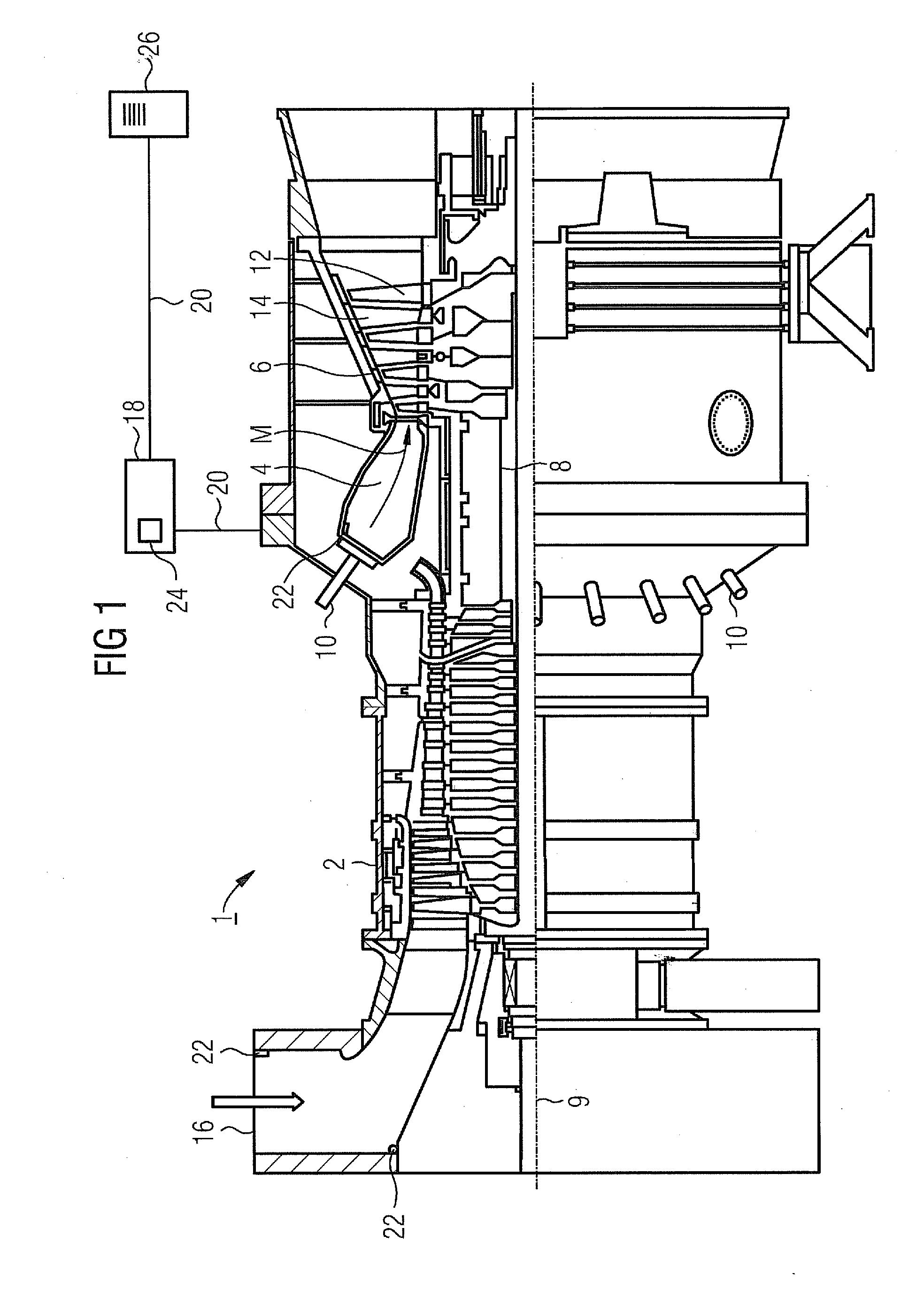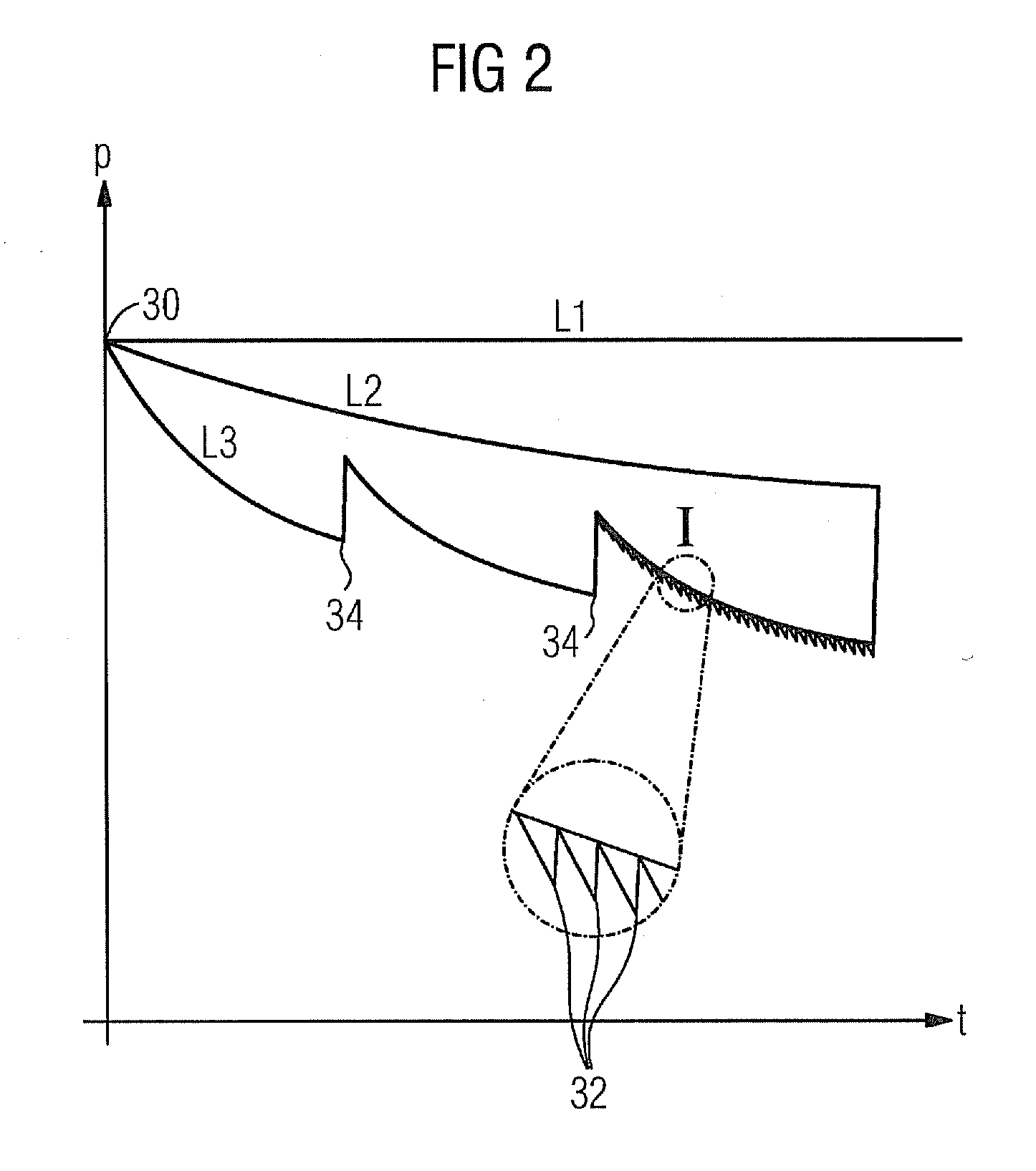Method for determining the suction mass flow of a gas turbine
a gas turbine and mass flow technology, applied in the direction of gas turbine engine testing, machines/engines, instruments, etc., can solve the problems of comparatively difficult to determine values and high degree of error, and achieve accurate analysis of the degree of contamination, low statistical error, and high efficiency of gas turbines
- Summary
- Abstract
- Description
- Claims
- Application Information
AI Technical Summary
Benefits of technology
Problems solved by technology
Method used
Image
Examples
Embodiment Construction
[0038]The gas turbine 1 according to FIG. 1 has a compressor 2 for combustion air, a combustion chamber 4 and a turbine 6 for the drive of the compressor 2 and of a generator or a working machine, not illustrated in any more detail. For this purpose, the turbine 6 and compressor 2 are arranged on a common turbine shaft 8, also designated as a turbine rotor, to which the generator or the working machine is also connected and which is mounted rotatably about its mid-axis 9.
[0039]The combustion chamber arrangement 4 comprises a number of individual burners 10, arranged around the turbine shaft 8 in the form of a ring, for the combustion of a liquid or gaseous fuel.
[0040]The turbine 6 has a number of rotatable moving blades 12 connected to the turbine shaft 8. The moving blades 12 are arranged in the form of a ring on the turbine shaft 8 and thus form a number of moving blade rows. Furthermore, the turbine 6 comprises a number of stationary guide vanes 14 which are likewise fastened in ...
PUM
 Login to View More
Login to View More Abstract
Description
Claims
Application Information
 Login to View More
Login to View More - R&D
- Intellectual Property
- Life Sciences
- Materials
- Tech Scout
- Unparalleled Data Quality
- Higher Quality Content
- 60% Fewer Hallucinations
Browse by: Latest US Patents, China's latest patents, Technical Efficacy Thesaurus, Application Domain, Technology Topic, Popular Technical Reports.
© 2025 PatSnap. All rights reserved.Legal|Privacy policy|Modern Slavery Act Transparency Statement|Sitemap|About US| Contact US: help@patsnap.com



